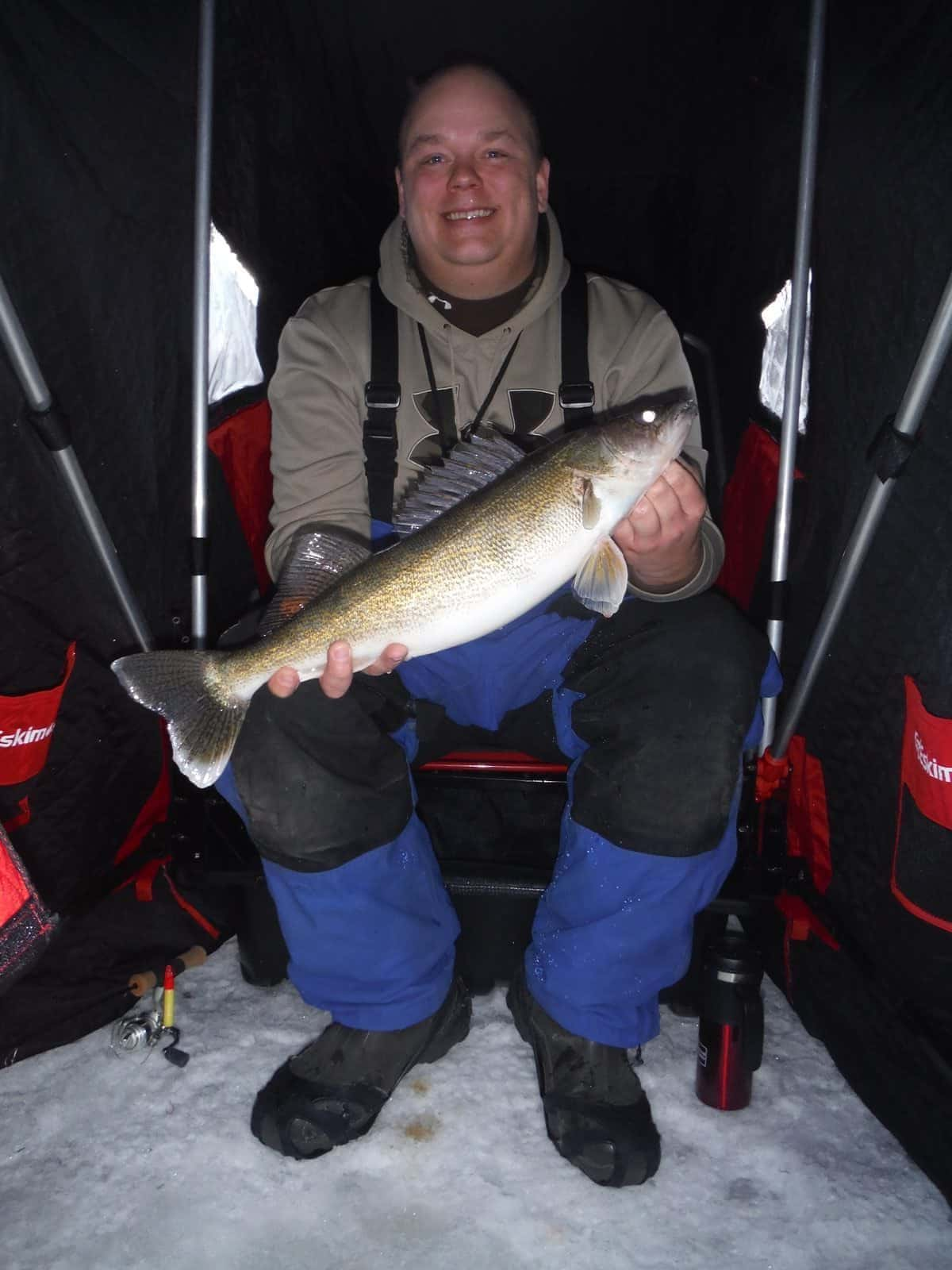
Hard Work. Midwinter walleyes can be a challenge for a number of factors, and those same items can put fisheries at risk with low oxygen levels. Simonson Photo.
By Nick Simonson
As January fades into memory and anglers eye up a faster bite as the back half of winter settles in, a number of conditions are at play which will help angling improve through the ice and provide a portent for what can be expected for spring and summer populations when waters open up.
With dissolved oxygen and light penetration being significant items of concern, and forage not as much of an issue, North Dakota Game & Fish Department (NDG&F)Fisheries Management Supervisor Paul Bailey shares his insight on what makes the bite better as winter wears on and when it’s time to be concerned about a water.
“There’s a few different reasons for that January lull occurring, one is that we’re dealing with a lack of light penetration in a lot of our lakes,” Bailey relates as to the here-and-now of slower mid-winter fishing, “that sun is still pretty low on the horizon through January and as January progresses we get a little more snow depth happening on the lakes as well,” he concludes.
On sunnier days the activity of sight-feeding fish such as pike and perch is notably better as even through the ice some light penetrates and facilitates better bites for those species. That light penetration is also vital to sustaining iced-over waters and their fish populations until spring – and keep pursued sportfish healthy and active – by helping to sustain dissolved oxygen levels through amounts produced by remaining plants and algae beneath the surface.
The dissolved oxygen in a water is there predominantly due to surface contact with the air in the open-water months and occurs right up until ice-up in late fall or early winter. As plants and algae die off under the ice due to changing conditions and less sunlight entering the water, there is less photosynthesis occurring below to transfer plant-made oxygen into the water. When dissolved oxygen levels sink to their typically lowest point in area waters by mid-February, that’s when biologists like Bailey get concerned about more than just a slowing bite due to stressed fish and worry more about potential winterkills.
“We really have some concerns when dissolved oxygen levels drop below that about two-parts-per-million present in the water, that’s where we start seeing some of our primary sportsfish – walleye, northern pike, yellow perch – start succumbing,” Bailey relates.
In his area of south-central North Dakota, Bailey and his team survey 80 to 100 lakes each winter to investigate which ones have the potential of winterkilling due to low oxygen content. Typically by the end of February he has a good bead on waters that may winterkill and he helps the NDG&F adjust stocking plans and other measures to help those lakes recover. This season, with the wet conditions leading to ice-up, lakes big and small were in good condition with deeper reaches to help sustain fish through the winter, but deeper snowcover in the southern and eastern regions of the state are quickly working against the good conditions at the start of the season.
The prairie lakes in the south-central stretch, particularly those around the Ashley and Wishek area may be of some concern, along with many of the shallower lakes in eastern North Dakota. Out in the western third of the state, where snow has not been significant, Bailey anticipates little winterkill concern if all things remain equal. Access to bodies of water across the region also follow the same pattern, with anglers finding easy entry onto the ice in the west, and difficulty increasing as they move to the eastern third of the state, as with significant snow on the ground, winds can quickly drift in those traditional areas and approaches where anglers find their way onto the hardwater.
As snow and ice melts, it’s likely fishing will improve along with the increasing daylight and loss of snowcover as dissolved oxygen levels increase from inflowing water. By the end of February, the NDG&F will have a good idea from waters around the state as to how fish fared this season. With the seasonal factors in play, anglers should also find the traditional late-ice bites setting up on those waters where fish did well.
The agency typically updates its winterkill list as spring approaches and reports can be found at gf.nd.gov/fishing/where-to-fish.

